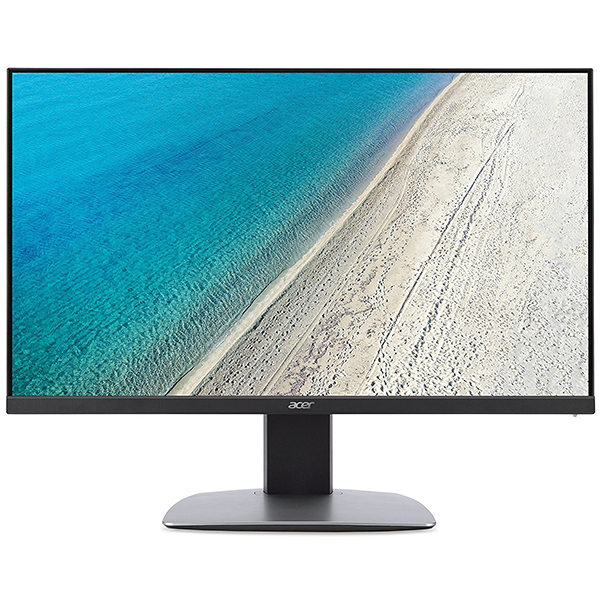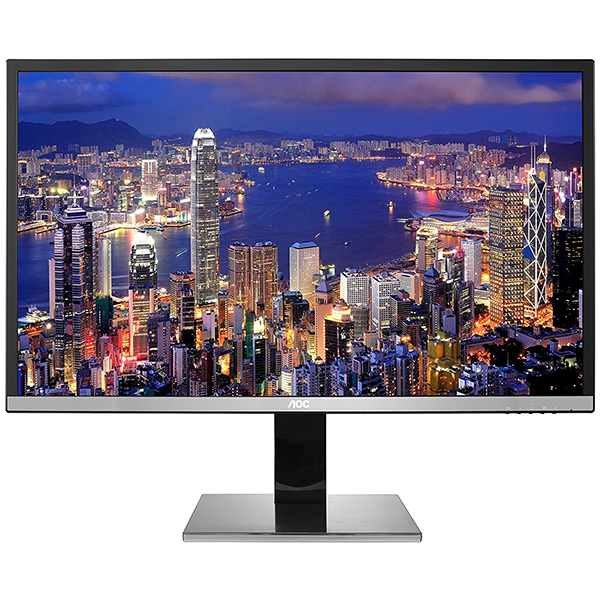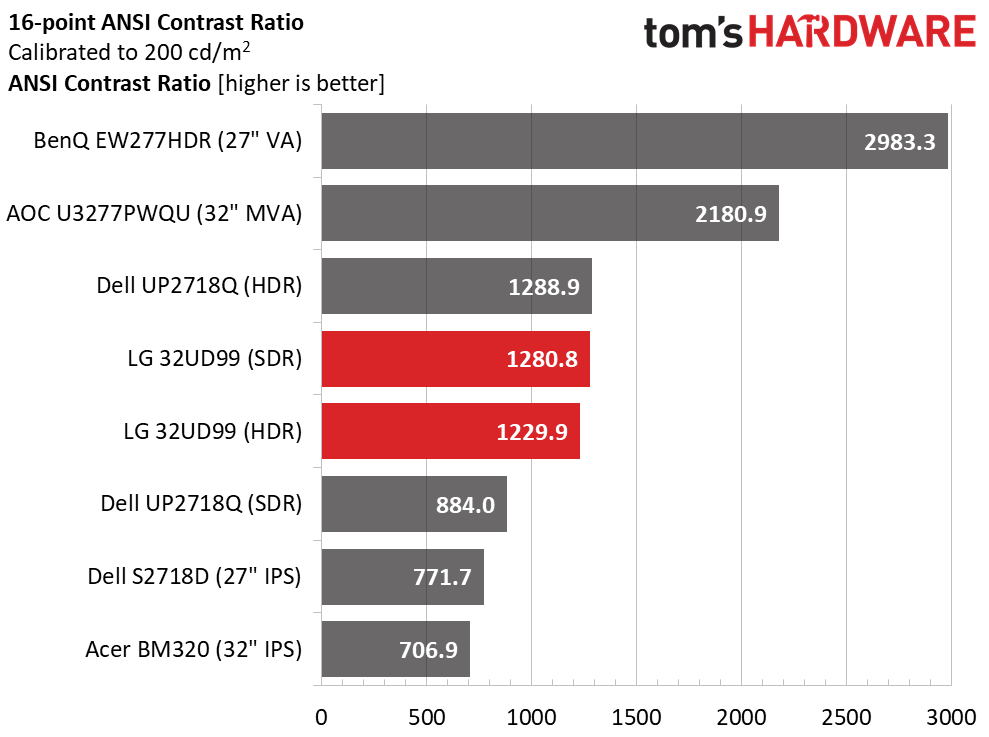LG 32UD99 Ultra HD HDR FreeSync Monitor Review
Why you can trust Tom's Hardware
Brightness & Contrast
To read about our monitor tests in-depth, please check out Display Testing Explained: How We Test Monitors and TVs. Brightness and Contrast testing is covered on page two.
Uncalibrated – Maximum Backlight Level
The 32UD99 is the fourth HDR-capable monitor we’ve reviewed so far. Relating test results to picture quality at this point in time looks like a simple brightness and contrast equation. If a monitor can get very bright, and produce deep blacks, it will display HDR content at a higher quality level. Since LCD panels have relatively low contrast, a full-array backlight with zone dimming will produce the greatest dynamic range. So far, the only screen we’ve tested with that feature is the Dell UP2718Q. Today’s group also includes the Dell S2718D, which accepts HDR10 but does nothing to enhance the signal. Then we have BenQ’s EW277HDR, which is a step up from the Dell, offering a VA panel with 3000:1 contrast. Rounding out the comparisons are the SDR-only Acer BM320 (IPS) and AOC U3277PWQU (VA).
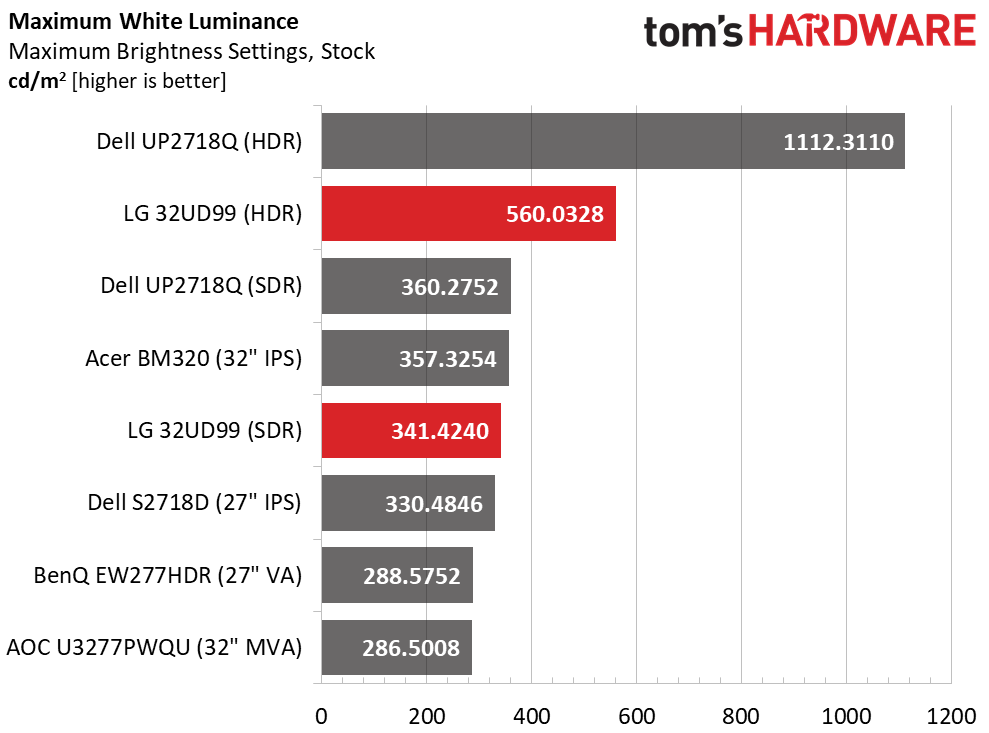
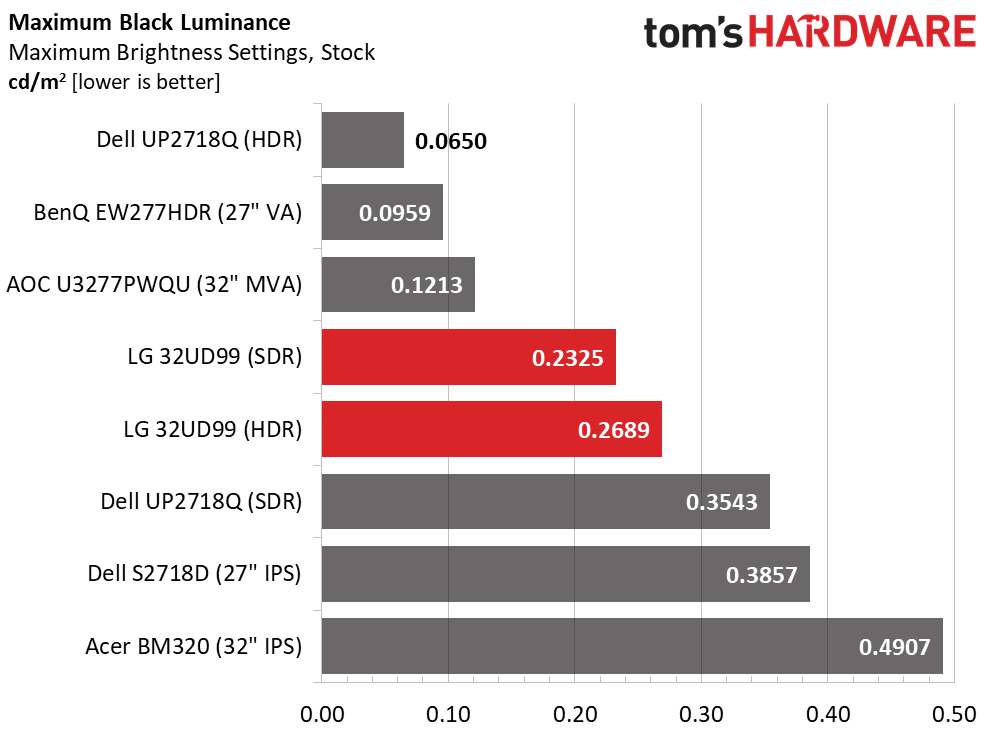
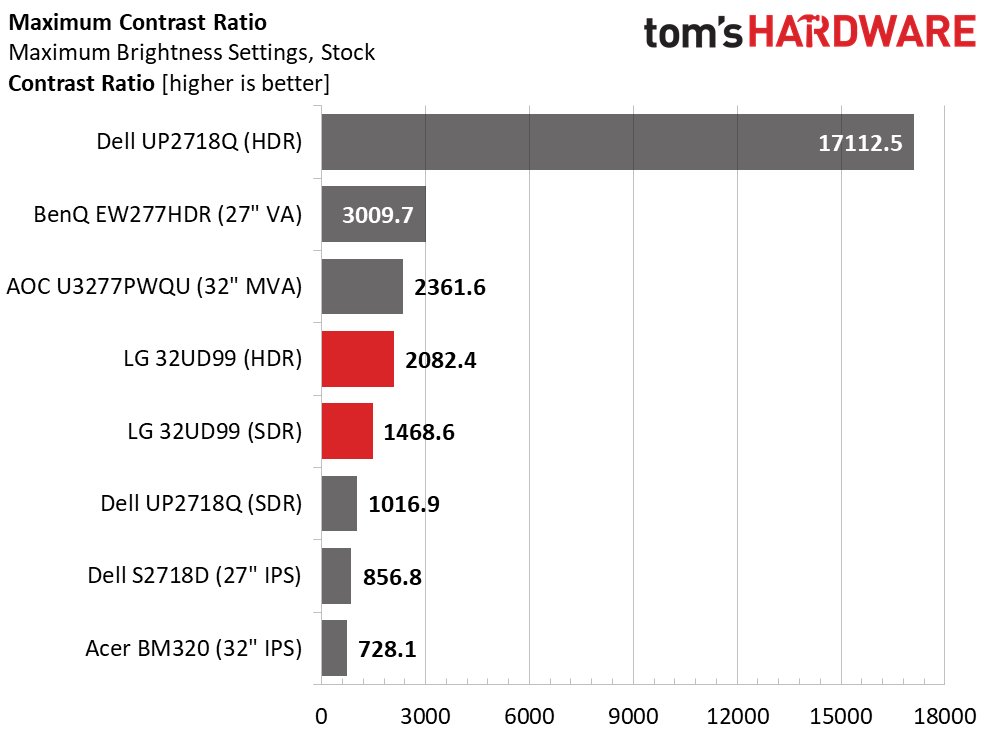
We’re showing the HDR luminance results here for both our review subject and the reference-level Dell UP2718Q. The Dell is one of the few 1000-nit panels currently available, and it topped 1100cd/m2 in our tests. The LG 32UD99, by comparison, offers over 560nits in HDR mode, which is respectable. It won’t deliver a VA panel’s deep blacks, but it does have the highest native contrast we’ve ever seen from an IPS part, over 1400:1 in SDR and over 2000:1 in HDR mode. The latter employs a bit of dynamic enhancement to up the number, but manages good HDR quality with no clipping of detail.
Uncalibrated – Minimum Backlight Level
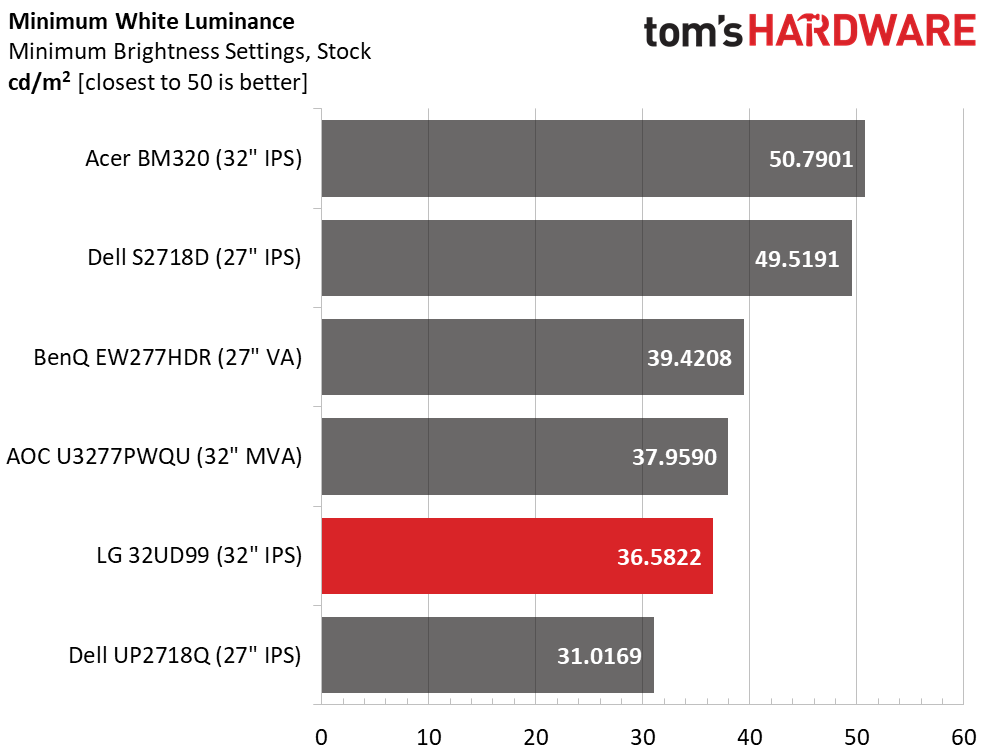
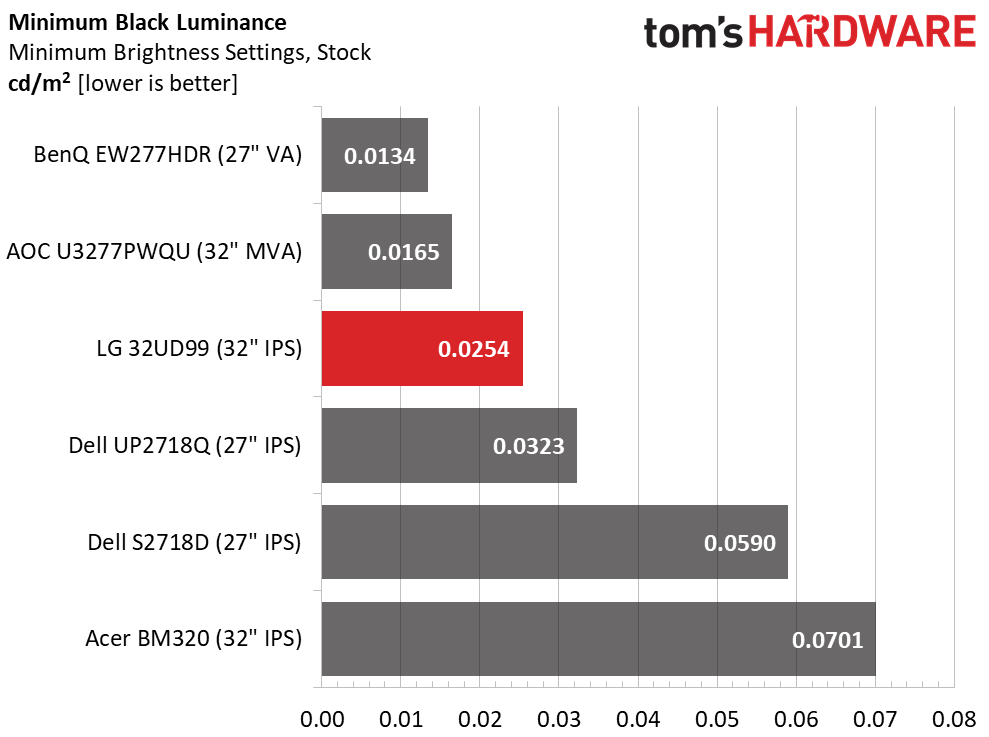
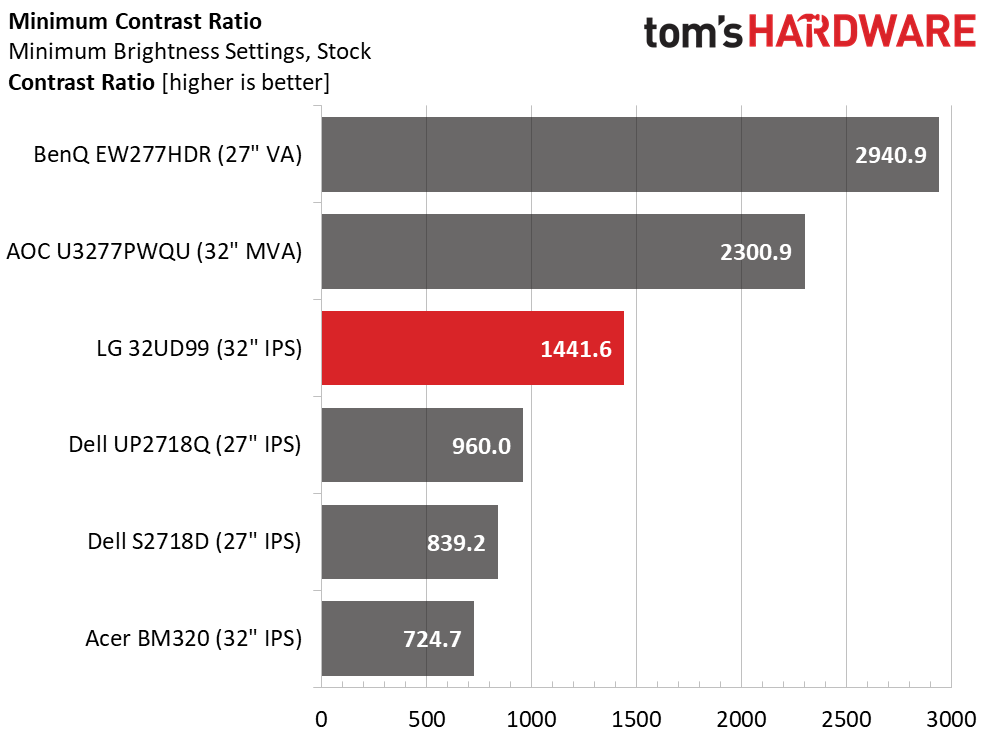
Taking the backlight to its zero setting produces 36.5822cd/m2, a little darker than we prefer. To set 50cd/m2, we moved the slider up four clicks. Black levels are superior to the other IPS panels here, and any similar screen we’ve tested for that matter. While not quite in the league of VA panels, this is a major step forward for IPS technology. Contrast remains consistent at 1441.6:1 in SDR mode. We recommend leaving the backlight maxed for HDR content. Otherwise, it looks no better than the standard fare.
After Calibration to 200cd/m2
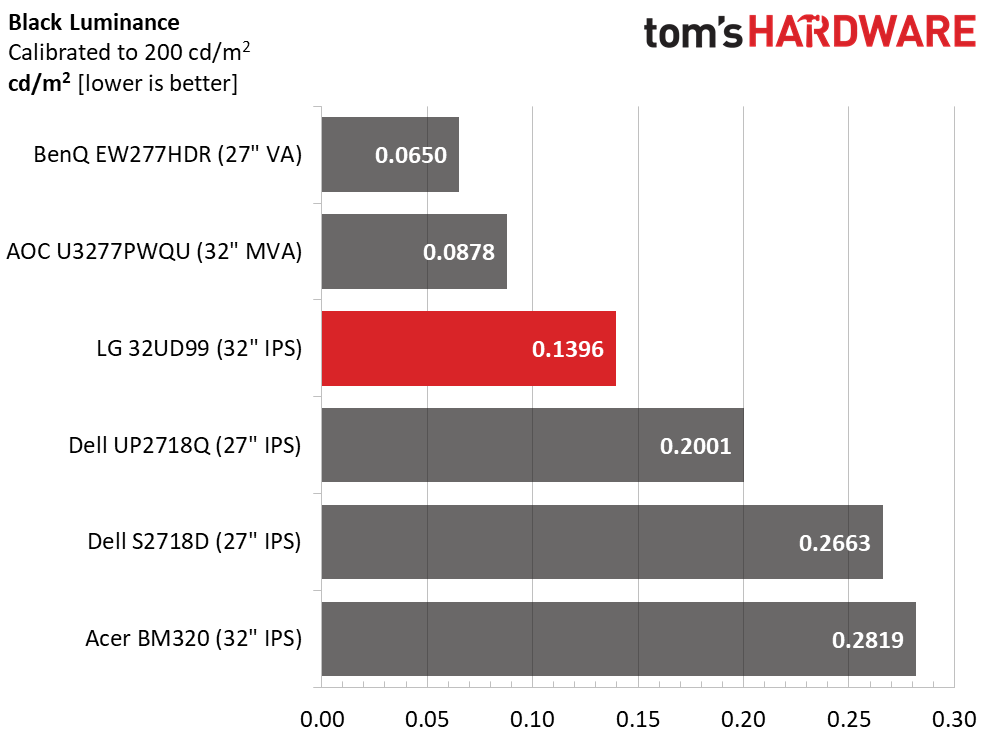
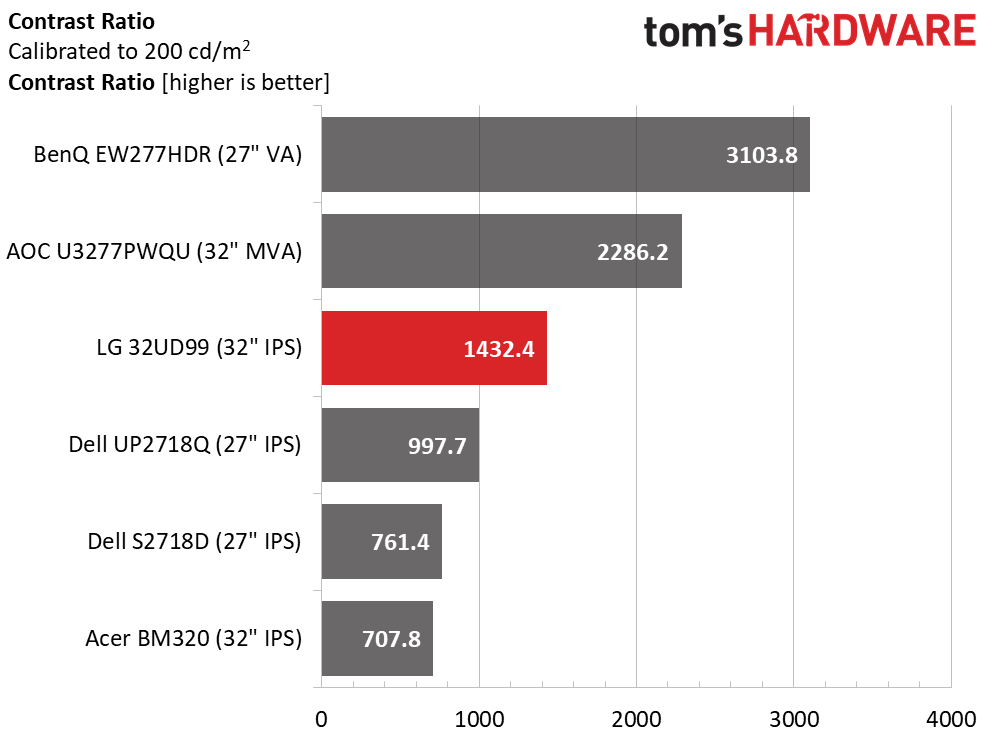
Our calibration, which as we noted earlier was unnecessary, did not affect contrast at all. It remains solidly over 1400:1, which is excellent for an IPS display. Only VA screens can boast superior performance in this test. And you can see that without the zone dimming available in HDR mode, Dell’s UP2718Q is the same as a typical IPS monitor.
ANSI Contrast Ratio
ANSI contrast numbers are nearly the same whether viewing SDR or HDR on the LG 32UD99. This suggests that a checkerboard pattern may not the be the best way to measure HDR contrast. Several new patterns have been suggested by industry professionals, but none have been decided upon. For now, we’ll stick to sequential contrast as a measure of a panel’s HDR capability. In the LG 32UD99’s case, its HDR image depth is a little better than BenQ’s, and slightly inferior to Dell’s. Given the price points at work here, that seems appropriate.
MORE: Best Gaming Monitors
Get Tom's Hardware's best news and in-depth reviews, straight to your inbox.
MORE: How To Choose A Monitor
MORE: All Monitor Content
Current page: Brightness & Contrast
Prev Page OSD Setup & Calibration Next Page Grayscale, Gamma & Color
Christian Eberle is a Contributing Editor for Tom's Hardware US. He's a veteran reviewer of A/V equipment, specializing in monitors. Christian began his obsession with tech when he built his first PC in 1991, a 286 running DOS 3.0 at a blazing 12MHz. In 2006, he undertook training from the Imaging Science Foundation in video calibration and testing and thus started a passion for precise imaging that persists to this day. He is also a professional musician with a degree from the New England Conservatory as a classical bassoonist which he used to good effect as a performer with the West Point Army Band from 1987 to 2013. He enjoys watching movies and listening to high-end audio in his custom-built home theater and can be seen riding trails near his home on a race-ready ICE VTX recumbent trike. Christian enjoys the endless summer in Florida where he lives with his wife and Chihuahua and plays with orchestras around the state.
-
Tanquen Just some random thoughts. Not sure I’m keeping it. (Returned it as the image would black out randomly and the other issues below)Reply
The included cables are way too short. Better than nothing but you best be using them with a laptop right next to the display. They should have done better on a $1k display. It seems they had to make the USB-C cable beefy and short as my other USB-C cable that I just upgraded to because my new Pixel 2 don’t like the poorer(?) quality older ones I had that worked fine with the Pixel 1 don’t work with the LG. The calibration has issues with the included USB and even the Windows app had issues.
The USB connection, while troublesome did finally work and the screen adjustment app is cool and I was able to update the displays firmware. Never done that with a display before.
It’s flat screen! Yeah! Not sure why everyone seems to be into pinching the middle of the screen and flaring the corners when we finally got rid of this type of distortion moving from CRTs?
It’s 16:9. Boo. The only option for 16:10 are other 30” displays like the newer U3017 but none I can find with a res higher than 2560x1600.
The Vesa Mount. It has one but it’s off center and mounts too high on my Ergotron arm. Boo! I know they want to put the hardware and stuff low on TVs and such too make the top look so thin but I’d rather have the vesa mount centered. Looking at getting a new TV and will have to redo the wall mount. :(
May try one of these on this display:
https://www.ergodirect.com/product_...x9_SZgwtY21GVa1c8oSqP8r4Gzk06RQUaAgHTEALw_wcB
https://www.newegg.com/Product/Prod...cCdSXCAMdHOdAebexS8aAlaNEALw_wcB&gclsrc=aw.ds
Size. Not a full 32” but that is how they do it. The small bezel is nice. No logo is nice too but, the display adjustments are on the bottom and this limits your multi mount options.
Built in speakers. Not the best sound but handy if you move the monitor around or in years to come when you just want simple sound without setting up extra speakers.
Anti-glare coating. Maybe it gets them a brighter screen but the LG shows way more than the Dell. Not mirror like but I see lots of light sources like me and my desk in the LG.
The display was shipped in a metallic bag with a lining but no extra screen protection. There are some permanent spots seen when cleaning and it’s much harder to clean. Like the coating is more porous. It took me some time to clean my finger prints off. Never wanted a pair of kit gloves before.
Calibration. The whites are more so then the Dell but a bit blue for me. The built in calibration sounded good but it’s next to imposable to get running and when you do, it adds banding.
Power. See this more and more but it has an external AC adapter. So my existing power cables won’t work. I did find an IEC Socket C14 to Cloverleaf Plug C5 Adapter but still had to mount the power brick.
It has some response time adjustments but I can’t see the difference between any of them and the motion blur is noticeably worse than the seven year old Dell.
Freesync. Glad it has it but can’t seem to get it to work.
HDR. Again, glad it’s there but none of the games I have support it and I can’t see anyway to play an HDR video to try it out. :(
The extra res is good and bad. The Dell U3011 30” at 2560x1600 is a good spot to be as I can run at 100% PDI and still read everything. With the new 4k display I’d need it to be 40” or something. With this 32”-ish display I have to up the DPI and still in 2018 Windows 10 has some issues scaling windows. Some apps or windows ignore the DPI setting or look like scaled bitmaps.
The IPS Glow is a bit worse than the 6-7 year old Dell but this may have something to do with the coating and the much greater focus on brightness and HDR. It takes some getting used to. The whites are also a bit blue.
And twice today there was a slight popping sound and an onscreen glitch to go with it. Got it from B&H for $880 or so and it's a good price at the moment. So, I can return and wait for them to get them in stock again or just return it. Thinking I should just return it.
Can't even try out Netflix 4k HDR as AMD has no Display Ready 3 or whatever. :(
Overall, I'm disappointed. The one game I could try with HDR (Hitman) seems like nothing changes with it on but you can’t just toggle it back and forth.
Freesync also doesn’t seem to work and it has more motion blur eventhough its listed as being faster than my old displays.
-
davidgirgis "Between the product photos and the different logos that appear, one can make out just what the LG expect the display is be doing."Reply
Is this English? -
AnimeMania Which video ports can be used for Freesync? Does HDR require certain video ports or can any be used?Reply -
Ilya__ Reply20749782 said:"Between the product photos and the different logos that appear, one can make out just what the LG expect the display is be doing."
Is this English?
People think the products not be like it is, but it do. -
hannibal It seems to be Vesa HDR400 monitorReply
https://displayhdr.org/performance-criteria/
Because max brightness is less than 600 nits. But it is close to it. So it is almost Vesa HDR600 compatible -
truerock I hate it when they put speakers, USB ports and other unrelated crap inside a video monitor. I wish they wouldn't do that. I like the trend that Samsung is starting with its TVs where all the ports and other non-video-monitor stuff is put in a separate box.Reply -
lukwtwz How did you measure total input lag? I ask because the 65ms you reported is several times higher than the highest figure reported in any professional review of this monitor I've read so far.Reply
